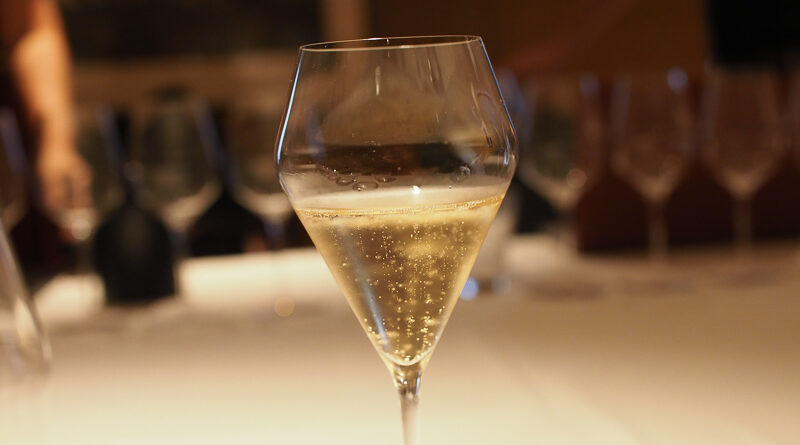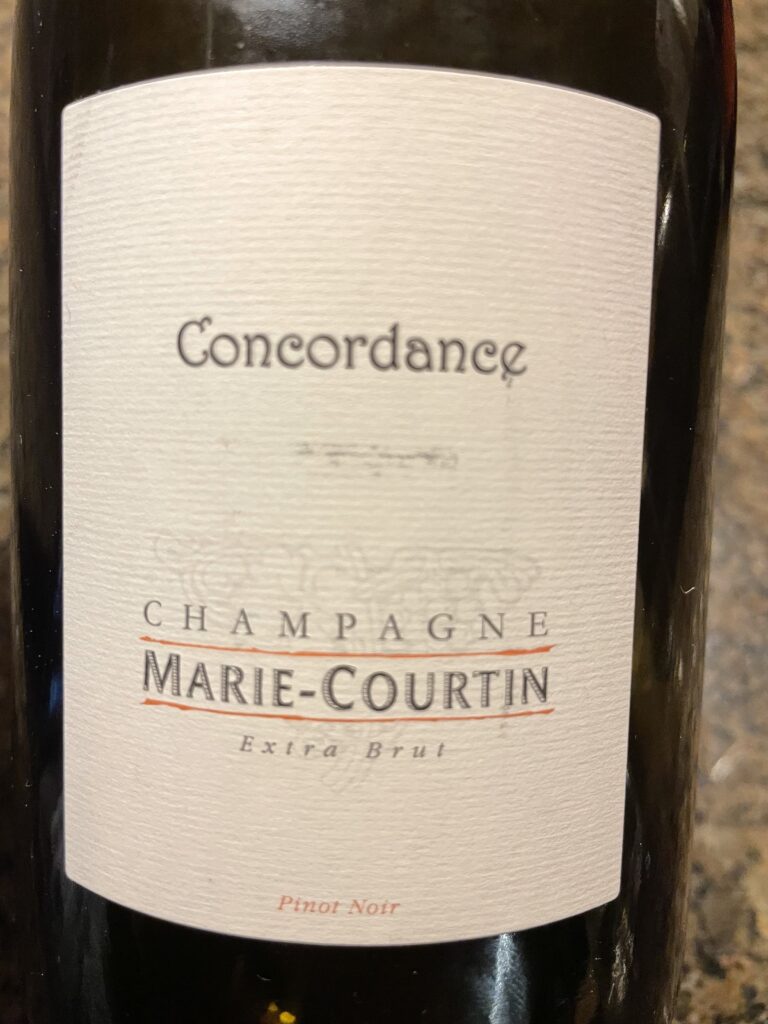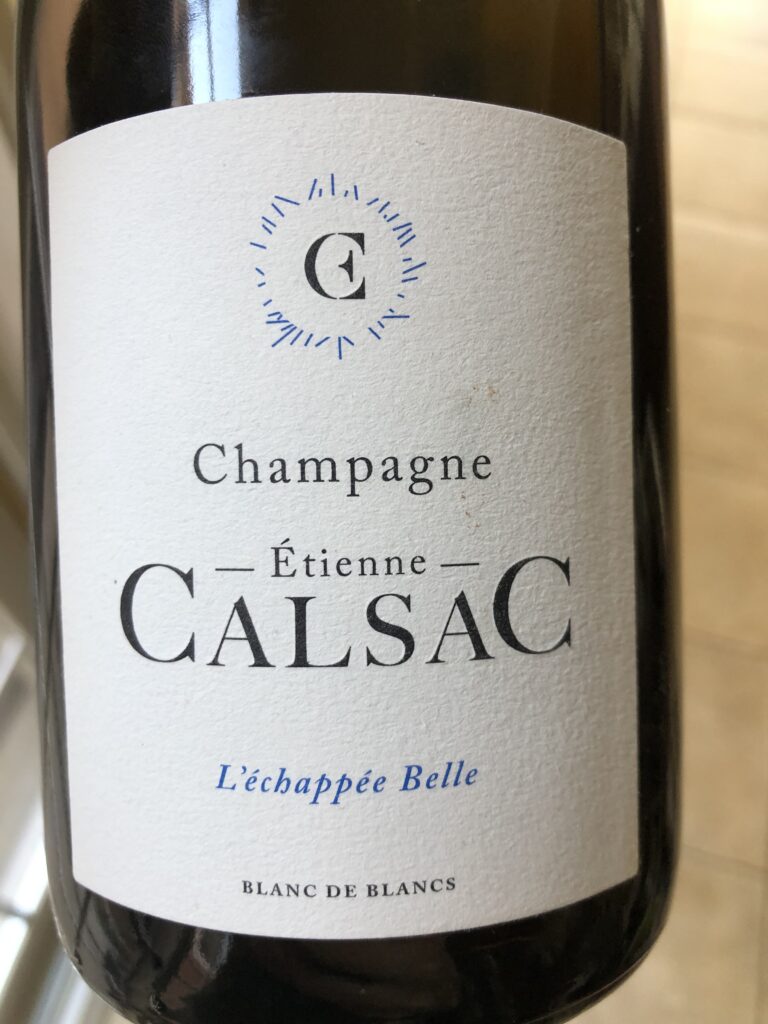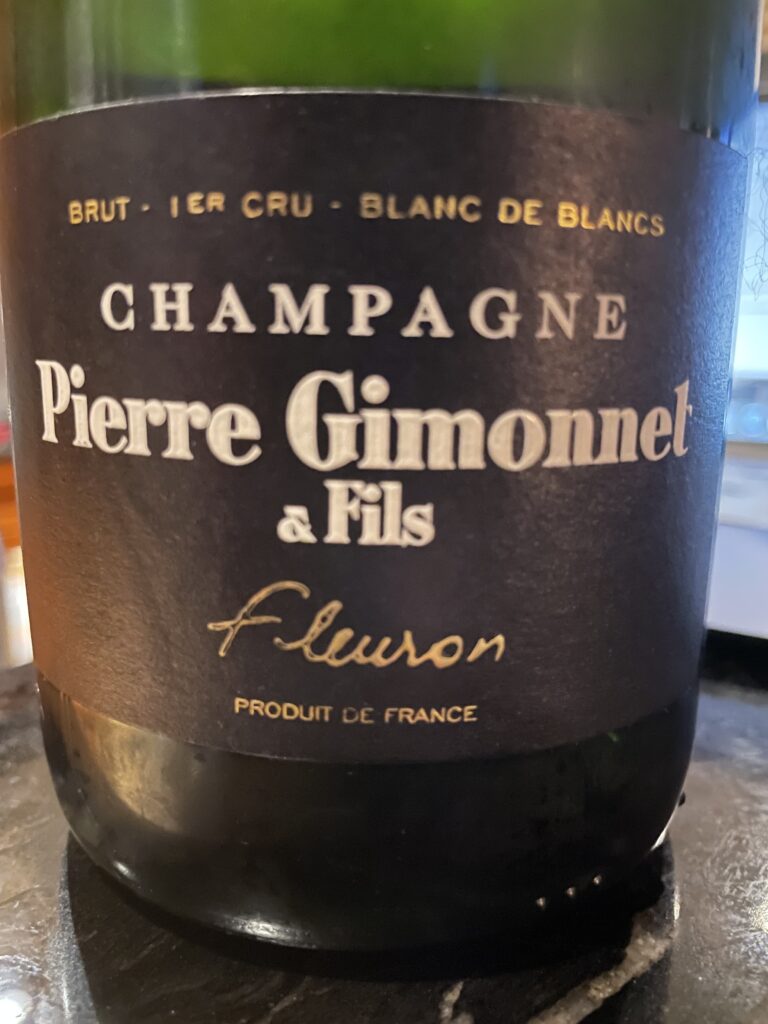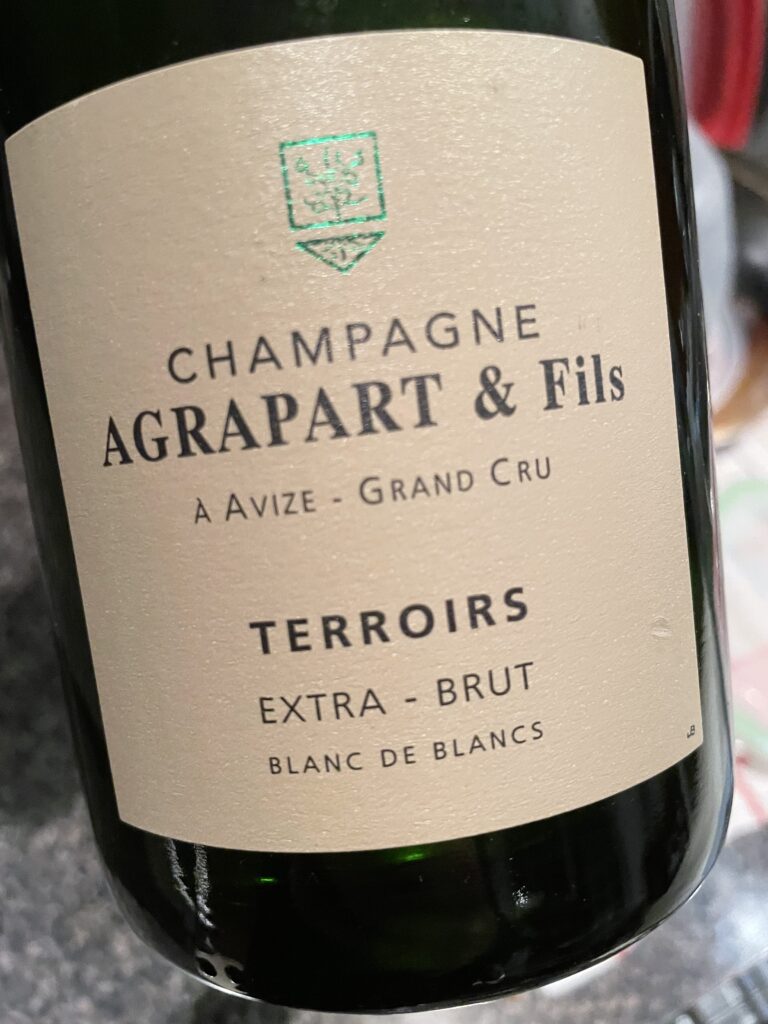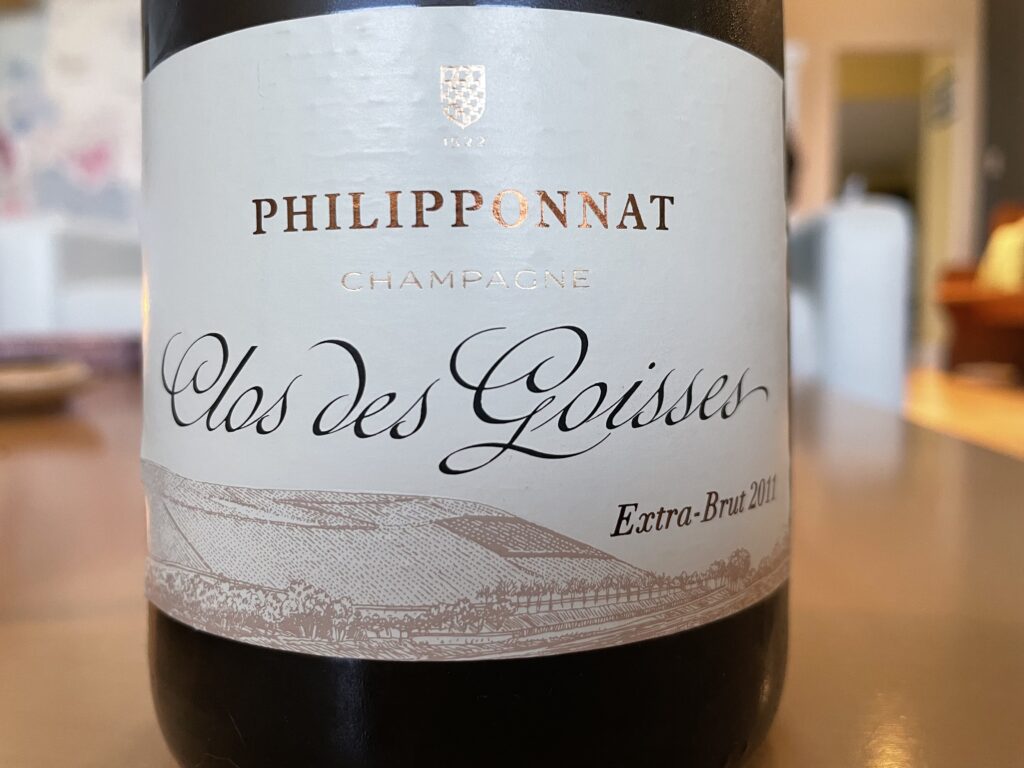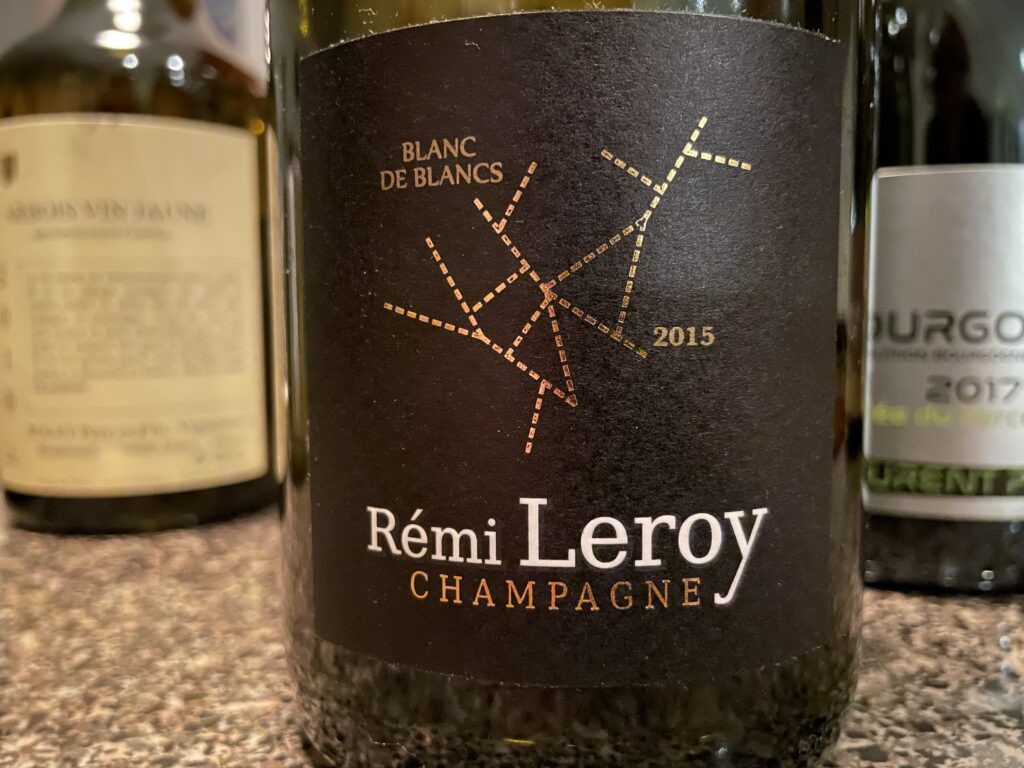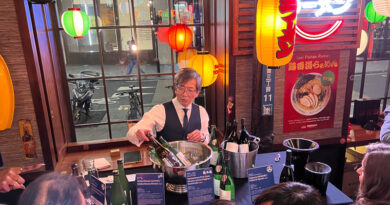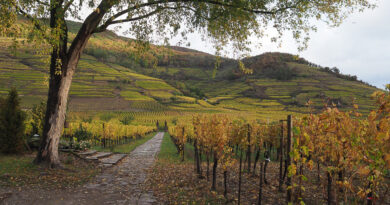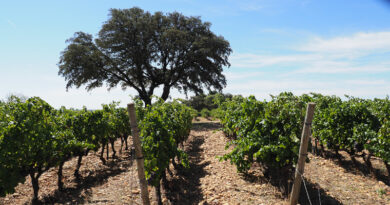Champagne: the state of the industry, plus 12 memorable bottles from 2021
The good news is we will not run out of champagne. The worrisome news is that it may be harder to find your favourite bottles to celebrate with this season and going forward. The takeaway news is that you should stock up, now, on your top bottles (our top 12 below).
As Goode reported in his September Champagne Harvest article, the 2021 vintage in Champagne was challenging. The region was levelled by the worst spring frosts of the last twenty years, pummeled with hail which affected approximately 500 hectares (some of which were wiped out), and drenched with severe downpours throughout. Unfortunately, due to all this moisture, interspersed with mild weather, there was a widespread attack of mildew and powdery mildew, along with autumnal botrytis. The Champagne Comité estimated the average crop loss from frost damage around 30% across the region, though some areas saw much higher losses, particularly in the warmer south where the maturity of the plants is advanced. However, in the Côtes de Blancs, there were also pockets of loss up to 50%.
The harvest itself was quick and focused, beginning in the Côte des Bars on September 6, and finishing September 27 in the Côtes de Blancs after a week of clear skies and a flurry of picking. Even though quantity is certainly reduced, initial reports across the entire region are that quality is strong.
2021 stands in contrast to 2020, generally an excellent vintage for quality and quantity in Champagne. However, due to the pandemic, yields for the 2020 harvest were lowered from the standard 10,800 kg/hectare to 8000 kg/hectare. That’s a 22% decrease vs. 2019. The CIVC controls the yields annually to ensure there isn’t a glut of wines on the market, and hence a race to the bottom with pricing. Producers are permitted to either use production above the maximum to replace lesser-quality reserve wines in their cellars from the previous year, or send their excess wines to be distilled. Understandably, the government’s distillation offer does not really appeal. “The price for the distillation is at €78 per [100 liters] and the price of Champagne on average is €1,200 per [100 liters],” said Jean-Marie Barillère, president of the Union des Maisons de Champagne (UMC), the trade group for Champagne houses, and co-president of the Comité Champagne (CIVC). “You can understand that this interests no one.” It meant that in a healthy 2020, some grapes were left unharvested. Of course, this affects the smaller grower champagne houses the most.
With a worldwide increase in champagne sales in 2021, the CIVC has set 2021’s maximum yields at a more typical 10,000 kg/ha. Reports from the General Syndicate of Champagne Winegrowers show that the reopening of global markets is expected to drive sales to an estimated 305 million bottles worldwide in 2021, which is an increase over pre-pandemic numbers of 297.6 million bottles in 2019.
Given 2021’s difficult conditions, however, most producers were unable to reach the maximum yield. Most likely, producers will have to dig deeper into their reserve wines for the NV mainstays, leaving less for their 2021 vintage champagnes (if, indeed, any are made).
Of course, growing and bottling and aging the wine is one thing. Getting the wines to market is an entirely different challenge. The broken global supply chain’s cumulative effects have been catastrophic. From wine glass supply (currently up to one year in arrears), to sourcing cardboard shipping boxes (‘only’ 3-6 months’ delay), getting the wine bottled and ready to leave the winery has been problematic. Add to that port closures, freight fare increases, a shortage in shipping containers, trucking transportation challenges and driver and fuel shortages, and Covid-19 mandates for distancing and limiting workers, it is a wonder we have any wines on shelves at all.
We Anoraks never need any excuse to stock up on, or liberally drink champagne, and we’ve continued doing just that. Here are Goode and my most memorable champagnes of 2021.
Goode’s picks:
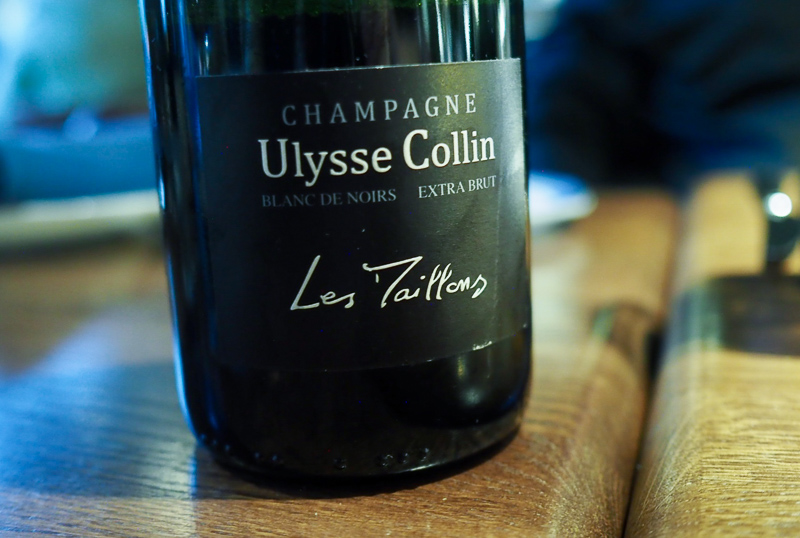
Champagne Ulysse Collin Les Maillons Blanc de Noirs Extra Brut 2016 France
Olivier Collin owns 2.5 hectares in this 6 hectare lieu dit, which is located in the Coteaux du Sezannais. 100% Pinot Noir planted in clay soils over soft chalk. Long base wine ageing of 12 months in barrel. This is dense with some structure, and lovely cherry and pear fruit, as well as dense citrus characters. This has real depth of fruit with some notes of nuts, honey and spice. Very fine. 96/100
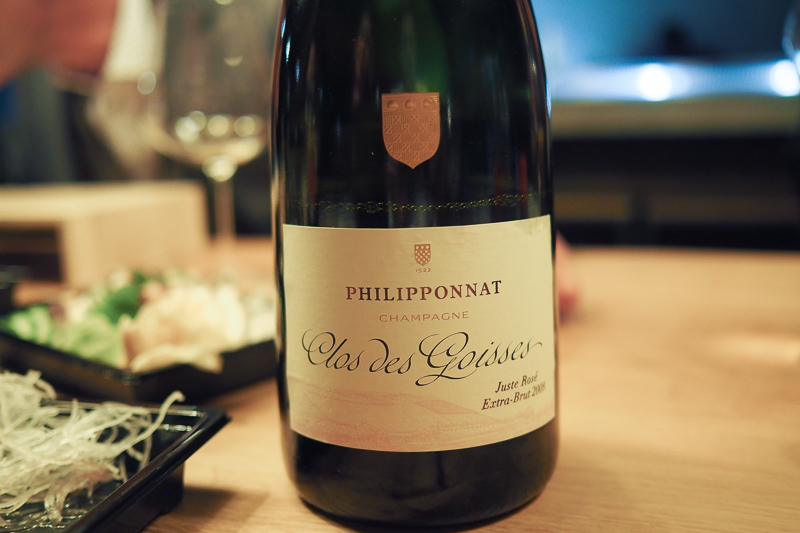
Champagne Philipponnat Clos de Goisses Juste Rosé Extra Brut 2008 France
This is a blend of 52% Chardonnay and 48% Pinot Noir from Philipponnat’s famous Clos des Goisses, south-facing and steeply sloped. It’s their rare Juste Rosé, and this was disgorged in March 2019 with a dosage of 4.5 g/litre. Hat tip to Anton for opening this for us. Pale in colour. Delicate, fine and sappy with some leafy hints, as well as strawberry and cherry notes, and a twist of citrus. So delicate and expressive with lovely purity. An amazing wine, combining structure and delicacy. 96/100
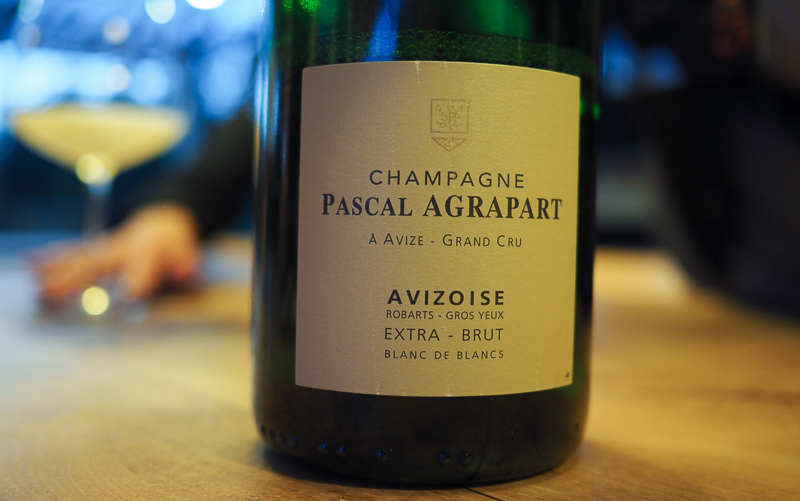
Champagne Pascal Agrapart Avizoise Extra Brut 2013 France
12% alcohol. Old vines from clay-based soils. Long fermentation in oak, wild yeasts. 3 g/l dosage, disgorged February 2020. Very expressive crystalline citrus on the nose. Taut, linear and fine on the palate with keen acidity. Very linear and very 2013. There’s some richness from the clay in the soil and it matches well with the elegance of this vintage: powerful, with energy and tension, and a candied lemon finish. 95/100
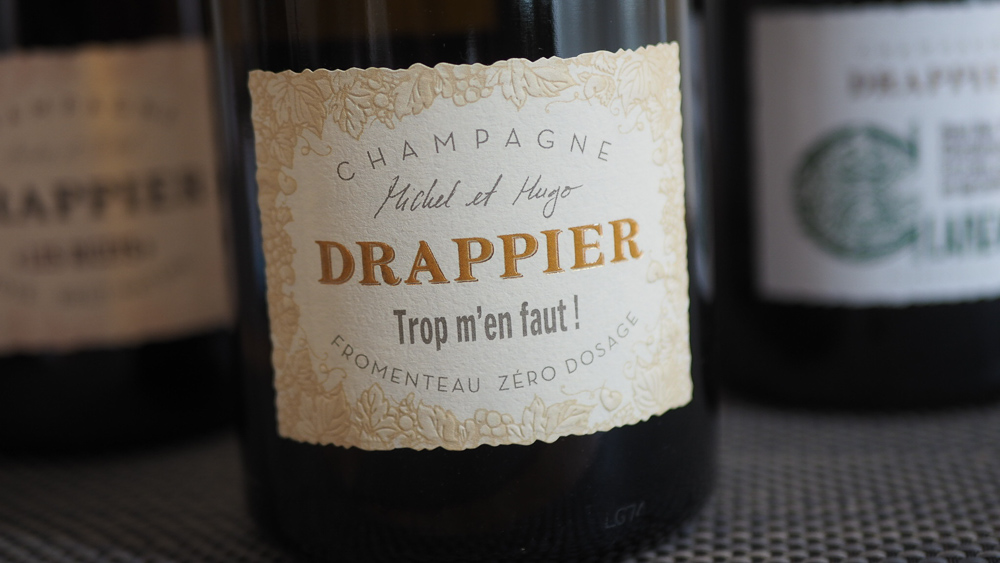
Champagne Drappier Trop M’en Faut! NV France
12% alcohol. This is a beautiful rarity: it’s 100% Fromenteau (Pinot Gris) with zero dosage. Bottled in 2019 this is half 2017 and half 2018, with some aged in barrel. Organically farmed. The name is a spoonerism: they weren’t allowed to use Fromenteau, so the made-up name actually means ‘It’s so good I don’t have enough of it,’ while alluding to its varietal origins. This is from a very warm south-facing plot, and the vines were planted in 2010 by Michel. It’s surprisingly low in acidity, with a pH of 3.55 and a TA of 6 g/litre, but there is some freshness from the phenolics. Half of the grapes were used to make a still wine (Coteaux Champenois). Yellow gold in colour. Toasty, spicy, honeyed nose. The palate is rich and has a spicy frame with sweet pears, a touch of cherry and some baked apple. Powerful and textural with some orange peel, nuts and table grape. So many layers. 94/100
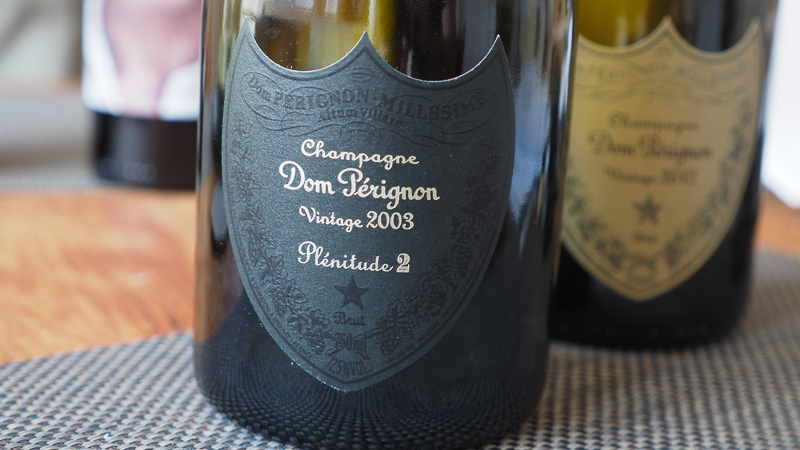
Champagne Dom Pérignon P2 2003 France
Pinot Noir 62%, Chardonnay 38%, disgorged September 2019 (15 years on lees) with a dosage of 5 g/litre. Full yellow gold colour. ‘The nose is consistent with the vintage,’ says Vincent Chaperon, with rich fruitiness and an iodine minerality, a contrast he describes as sun and clouds. Toasty with some rich peach and baked apple on the nose as well as hazelnut and pastry. The palate is bold, taut and structured with real intensity. It shows crystalline citrus fruit, spice and apricot, as well as savoury notes of earth and iodine, spicy minerality and plenty of structure. A remarkable Champagne. 96/100
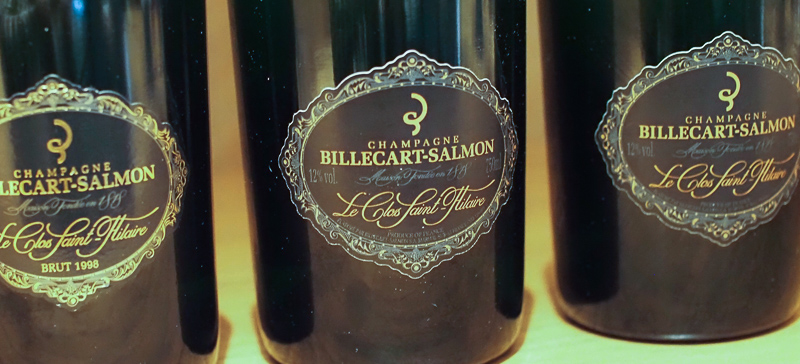
Champagne Billecart Salmon Le Clos Saint-Hilaire 2002 France
A great year for this small-production Pinot Noir. 11% natural alcohol, late-ish harvest. Dosage is 1 g/litre. 3774 bottles. ‘We saw a step up in the Clos standing in the market with 2002,’ says Matthieu Roland-Billecart. Nuts, honey, spice and cherries, as well as some crystalline citrus fruit on the nose. Powerful and structured with a real vinosity, showing a balance between citrus and apple fruit with the savoury nut and toast characters. Lovely intensity and depth with power and presence, and good acidity. Very fine showing great intensity, a touch of marzipan, and a fine toasty, slightly sweet flourish on the finish, which just goes on and on. 98/100
Ring’s picks :
Champagne Agrapart & Fils Terroirs Extra Brut Blanc de Blancs N/V, Champagne, France
Founded in 1894, Champagne Agrapart & Fils has rightfully emerged as one of the finest grower estates in the Côte des Blancs. Pascal Agrapart is the current generation overseeing the estate, making wines since 1984 when he took over from his father, Pierre, and after studying oenology in Bordeaux, and at home in Avize. His father never used herbicides or chemical pesticides, and though Pascal is uninterested in being labelled organic or biodynamic, he follows the same naturalist practices, focusing on the soils. From four villages (Avize, Cramant, Oger and Oiry) and Chardonnay vines aging 20-50 years, this bottle was put into bottle May 2017, with 40% reserve wines. It was disgorged March 2020, it with 5 g/L. Sharply focused, this drives through the palate with lemon, roasted Marcona almonds, deep, wet chalk and a tight riffing grip housing the nimble, medium bodied palate. Fantastic tension throughout to a mouth-watering finish. Green plaquette. 94/100
Champagne Pierre Gimonnet Fleuron 2015, Champagne, France
Didier Gimonnet oversees the winemaking and viticulture of the 28 hectare estate, Pierre Gimonnet et Fils, while his brother, Olivier takes care of of the business side. Their family has been growing grapes in Cuis, where they are still based, since 1750. In 1955, their father, Michel, took control of the property, steering the winery’s characteristic chiselled, crisp, and mineral-driven blanc de blancs. Michel began vinifying each plot separately, in stainless, to better understand and represent their distinct terroir. Fleuron, meaning flagship, was created to capture the spirit of the vintage, and is a blend of all of the tanks in order to best represent the year. This encompasses 5 villages: Chouilly, Cramant, Oger, Cuis, and Vertus. After 4 years on lees, this was bottled in September 2020 with 5 g/L. Rich and powerful, savoury, yet shaped, with salted brioche, savoury stones and a firm buzz of minerality. Lovely harmony, complexity, depth, and completeness, with fantastic length. Such a wine. 95/100
Champagne Étienne Calsac L’Echappée Belle Blanc de Blancs N/V, Champagne, France
After taking over his grandparents’ 2.8 hectares scattered in small plots around Avize, Etienne began the transition to organic viticulture, working the vines by hand, plow and horse. This cuvée is from predominantly premier cru villages in the Grauves, in the Côte des Blancs, from 30+ year old vines, aged on lees for 7 months before bottling with 30% reserve wines, followed by 36 months in bottle. It was bottled with 2 g/L dosage. Classic Avize, with its profound yet precise structure. Deep chalk bases meyer lemon, green apple, chilled with a grippy, saline framework along the nimble, crispy meringue palate. There’s a lovely balance between delicacy and depth here, making for beautiful drinking now, but with time to build in your cellar also. One to watch. 93/100
Champagne Marie-Courtin Condordance 2016, Champagne, France
Champagne Marie-Courtin is run by the feisty and energetic Dominique Moreau and is named for her grandmother. The estate covers 2 hectares in Polisot, near the Seine River in the southern Aube, and is planted to mostly Pinot Noir. She farms biodynamically and ferments native in stainless before transferring to the bottle for secondary ferment. The wines are bottled with zero dosage. Concordance comes from a single parcel of Pinot Noir planted in 1968, and has no sulphur added (one of the few sans souffe Champagnes). My bottle was disgorged in 2020. Rich yet nimble, this carries wild cherry, brioche, lemon peel over a deep chalky base, laced with a salty, savouriness, and finishing with a burnished bergamot note. Quite serious, and moreish, this is a striking, vinous, characterful, and contemplative champagne. 93/100
Champagne Philipponnat Clos de Goisses 2011, Champagne, France
Clos de Goisses is one of the world’s most prized champagnes, entirely drawn from the single Glos des Goisses vineyard in the Vallée de la Marne. The steeply sloping south facing vineyard has been planted to vines since 1522, making it the oldest clos in Champagne. Champagne Philipponnat began in 1910 when Auguste and Pierre Philipponnat established their Champagne house in its current location of Mareuil sur Aÿ. They acquired this 5.8 hectare jewel of a site in 1935, currently planted to 3.5 hectares Pinot Noir, and 2 hectares Chardonnay on chalky bedrock. Clos des Goisses is divided into 14 plots, of which only the four best of 2011 were included in this blend. This vintage is uniquely entirely Pinot Noir, due to the uprooting of Chardonnay vines in certain plots just before 2011, and the exceptionally floral aromatic profile of that year’s pinot noir. The hand-selected grapes were primarily (80%) fermented in older wood, with no MLF, before heading to barrel for an 8 year rest, prior to disgorgement in 2020, with 4.5 g/L. Such a striking wine. Very powerful and deep, yet light and graceful, with deep chalk underlaying filigreed white cherry, wild strawberry, wild raspberry, scented with wild mint. The finish lingers with a fine chalky minerality, and slight dusting of white pepper. So vinous, but so elegant and finessed, every glass is a thrill. This wine is ideally drinking now, but will last in your cellar for many, many years to come. 96/100
Champagne Rémi Leroy Blanc de Blancs 2015, Champagne, France
This is a rare 100 percent Chardonnay from The Aube, a region dominated by pinot noir, even though 95 percent of the vineyard is Kimmerdgean soil (the same as in chardy-central Chablis). The young Remi Leroy farms 3 of his family’s 9 hectares here, selling the remaining fruit for additional income, and with the goal to use all of the fruit for his non-interventionist label. The only inputs he uses is a small addition of sulphur. This 2015 was dosed with 2 g/L. Profound and pure, with deep chalk, lemon, green apple, chestnut, meringue across a gossamer, lifted palate. The sides feel like they were carved out of limestone, leading this to a saline, lingering finish. Still very fresh and alive. Very impressive. 95/100

